 | Charles Davies - Algebra - 1835 - 378 pages
...665 is not a perfect square. But is the square of 25 the greatest perfect square contained in 665 1 that is, is 25 the entire part of the root ? To prove...the squares of two consecutive numbers, is equal to tvAce the less number augmented by unity. Let . . . a = the less number, and . . . o+l = the greater.... | |
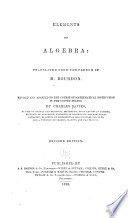 | Algebra - 1838 - 372 pages
...entire pun of liie root sought. For example, if it were required to extract the square root of 663. we should find 25 for the entire part of the root...numbers, is equal to twice the less number augmented by unify. Let . . . a = the less number, and . . . a + 1 = the greater. Then . . (a+l)3=a*+2a+l and .... | |
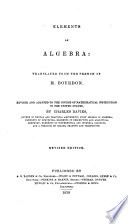 | Algebra - 1839 - 368 pages
...of the greatest perfect square contained in the given number, or ike entire part of the root sougld. For example, if it were required to extract the square...equal to twice the less number augmented by unity. Let . . . a = the less number, and . . .o+1= the greater. Then . . (a+l)3=a3+2a+l and . . . (a)3=a3... | |
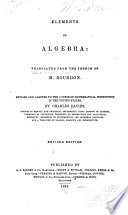 | Bourdon (M., Louis Pierre Marie) - Algebra - 1839 - 368 pages
...in 665 ? that is, is 25 the entire part of the root ? To prove this, we will first show that, t]ie difference between the squares of two consecutive...equal to twice the less number augmented by unity. Let . . . a = the less number, and . . . a+1 = the greater. Then . '. (a+1)3=a3+2a+1 and . . . (a)a=aa... | |
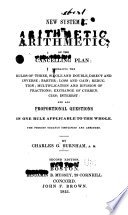 | Charles Guilford Burnham - Arithmetic - 1841 - 324 pages
...that is, it is the 129 entire part of the root. This may be shown, thus : The difference be43 tween the squares of two consecutive numbers, is equal to twice the less number, plus 1 . The difference between the squares of 8 and 9 is 17=8x2+1, and 23X2-}-1 =47, which is greater... | |
 | Charles Davies - Algebra - 1842 - 284 pages
...down the second period for a dividend. III. Double the root already found, and place it on the left for a divisor. Seek how many times the divisor is...the square root of numbers. What is the first step ? What the second ? What the third? What the fourth ? What the fifth ? Let . . a— the less number,... | |
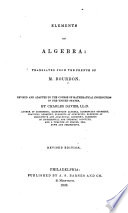 | Charles Davies - Algebra - 1842 - 368 pages
...the next period for a new dividend. V. Double the whole root already found, for a new divisor, and 1st. REMARK. If, after all the periods are brought...equal to twice the less number augmented by unity. Let . . . a = the less number, and . . . a+1 = the greater. Then . . (a+l) 2 =a 2 +2a+l and . . . (a)... | |
 | Davis Wasgatt Clark - 1844 - 394 pages
...1 ; whence the square of a quantity greater by unity than a exceeds the square of a by 2o+ 1 ; or, the difference between the squares of two consecutive...equal to twice the less number augmented by unity. Hence the entire part of the root cannot be augmented unless the remainder exceed twice the root found... | |
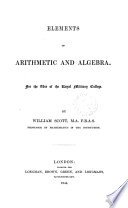 | William Scott - Algebra - 1844 - 568 pages
...numbers ; then (a+l)!=(a+l) (a+l)=as+2a+l (Art. 76), and a*=aXa=a! ; .-.(a+1)2— a"=2a+l. ' Whence the difference between the squares of two consecutive numbers is equal to twice the less number + 1 ; the greater, therefore, the number a the greater is the difference between (<z+l)2 and a2, and... | |
 | Charles Davies - Algebra - 1845 - 382 pages
...perfect square. But is the square of 12 the greatest perfect square contained in 168? That is, is 12 the entire part of the root? To prove this, we will...equal to twice the less number augmented by unity. Let a = the less number, and a + 1 = the greater. Then (a + I)2 = a2 + 2a + 1 and (a)2 = a2 Their difference... | |
| |